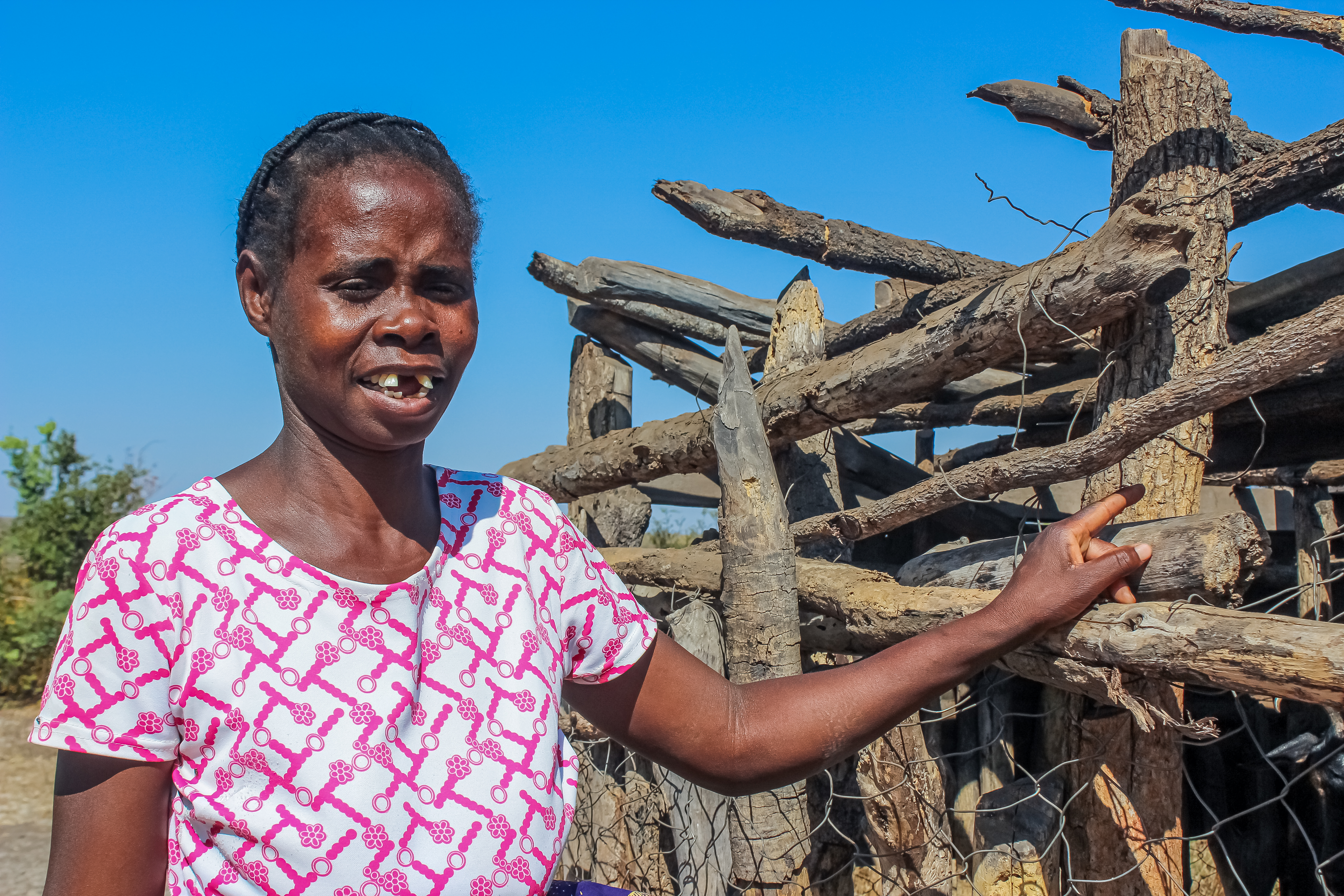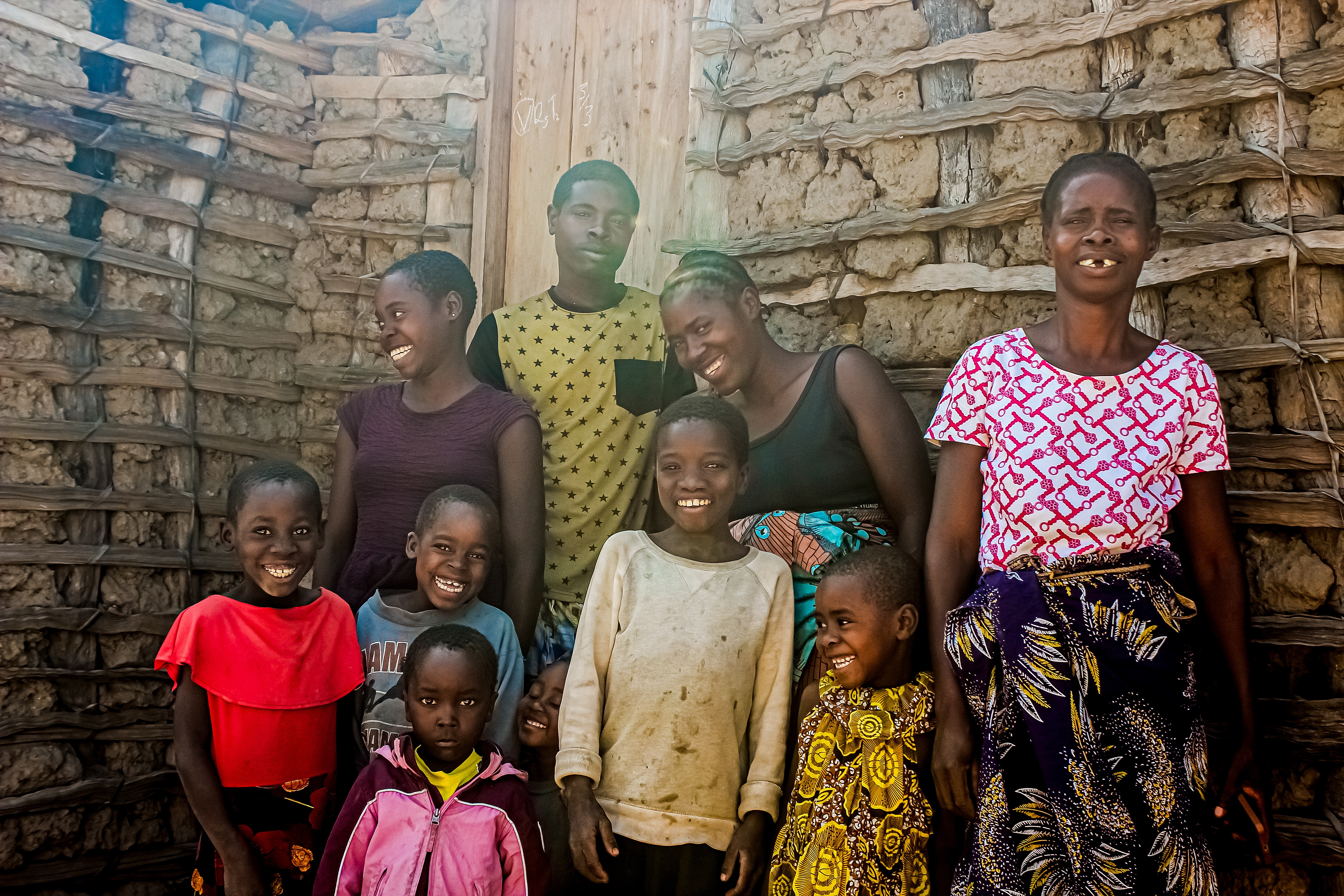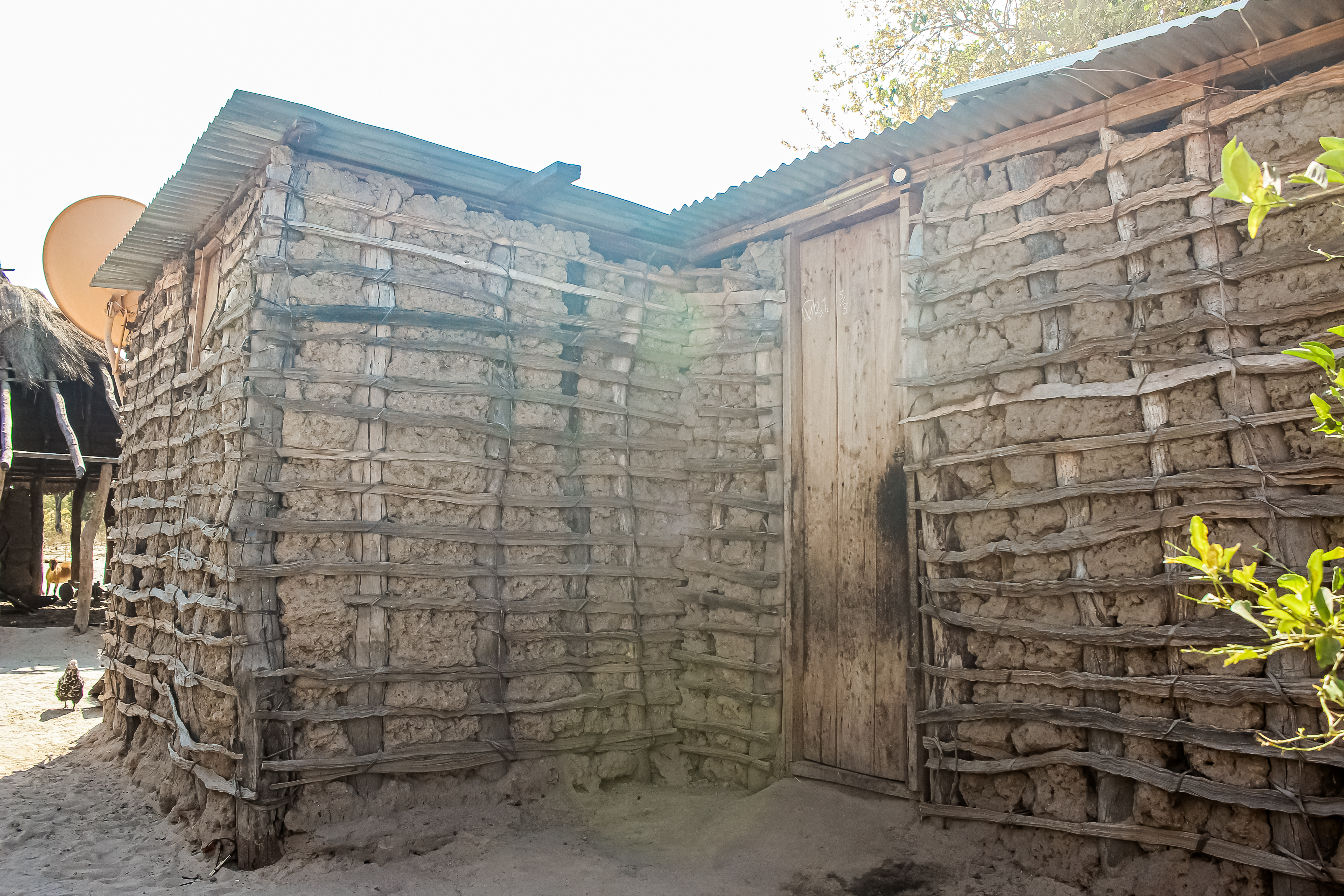In Western Zambia, the Strengthening Climate Resilience of Agricultural Livelihoods in Agro-Ecological Regions I and II (SCRALA) project is transforming the lives of vulnerable smallholder farmers. Among those benefitting from the initiative is Nanswau Samisis from the village of Sabazibe in the heart of the Mulobezi District, Western Zambia.
Cultivating hope: How Zambian smallholder farmers are benefitting from climate-resilient farming
November 1, 2023

Nanswau, 43, stands next to her goat shelter in Sabazibe village, Mulobezi district, Western Province
Nanswau, is a single mother of three daughters and a son and the sole provider for her family.
In the past, Nanswau struggled to make ends meet. She lacked a reliable source of income, depending primarily on small-scale farming, cultivating crops such as beans, maize, and groundnuts. Her yields were frequently impacted by climate-related factors such as drought and flash floods.
Witnessing her children go hungry and sleep in an unstable thatched-roof house became an overwhelming source of concern for her.
"I would constantly worry about my children’s well-being and spend sleepless nights praying for opportunities to make a steady income so I could support them,” Nanswau said.
"I felt so anxious every time it rained. Due to a leaking thatched roof, my children and I would move into a corner just to avoid being soaked. Every day we would move things around the house to keep them from getting wet – but that did not help, we still ended up soaked"she said
With their uniforms and books often drenched, the children’s school attendance was affected. Furthermore, all their household items – including clothing, African mat, and bedding – were consistently damp during the rainy season. This posed a significant risk of pneumonia for her family. “I feared that my children would get sick, “she said.
While rain was a constant source of anxiety, so too were recurring droughts.
“When my crops were affected by drought, we did not have any harvest and ended up cutting down on meals; at times we would sleep on empty stomachs. When I did piecemeal work on other people’s farms, I would buy a 2kg bag of maize meal that would only last us a day and this meant not eating the following days,” she said.
In 2022, Nanswau learnt about the SCRALA project through a camp extension officer who informed her about a meeting that was going to take place within her community regarding the project. Intrigued, she attended the meeting, during which the project’s aim was explained by project officers. Afterwards, her name was registered and was later selected-she qualified under the categories of vulnerable households.
Implemented by the Zambian Government through the Ministry of Agriculture, with funding from the Green Climate Fund (GCF) and support by the United Nations Development Programme (UNDP), Food and Agriculture Organisation (FAO), and World Food Programme (WFP), the project – known as SCRALA – targets vulnerable smallholder farmers at risk of being left behind, such as women, the youth, persons with disabilities and the elderly. It aims to reach more than one million people, including transforming the lives of more than 940,000 farmers in Zambia.
The project operates across 16 districts in Zambia and provides comprehensive support to small-scale farmers throughout the agricultural value chain, from farm to market. This encompasses agricultural planning, production guidance, and post-production assistance, along with access to reliable weather information to enable farmers to make informed decisions, including which crops to plant and when.
Additionally, the project offers farmers farming inputs (seeds for resilient crops such as cowpeas, groundnut, maize seed, as well as soil kits and farming tools), enhanced knowledge of conservation agriculture, market access, financial management skills, and opportunities for alternative livelihoods such as goat and chicken farming, fish cultivation, and beekeeping.
These efforts aim to enhance food security, promote sustainable household income, promote climate-resilient agricultural production, thus contributing to the realisation of the Sustainable Development Goals, notably No Poverty (Goal 1), Zero Hunger (Goal 2), and Climate Action (Goal 13).
Ultimately, the project is helping build a shock-responsive, risk-informed, and inclusive society, aligning with the country’s Eighth National Development Plan.
Nanswau's journey is just one example of the difference this vital initiative is making for communities facing growing challenges driven by climate change.
Later in the year, she had become a participant in the project’s pass-on mechanism-the model provides goats (four female and one male) to individuals who have been severely affected by climate change-especially focusing on women and persons with disabilities because they are disproportionately affected by the effects of climate change. Under the mechanism, each participant initially receives five goats and subsequently, once their herd grows to 10, they pass on five goats to the next person in line.
“I was very happy when I received five goats last year because I knew for sure this meant a better life for me and my children, so I looked after the goats so well,” Nanswau said.

Nanswau with her family
“I have managed to buy roofing sheets to renovate the house for me and my children. Before, we lived in constant fear of the thatched roof falling on us, especially during the rainy season,” said Nanswau.
After her goats reproduced, she proceeded to transfer five goats to another female small-scale farmer in her village while keeping 15 goats for herself. She then sold five of them for 4,000 Zambian Kwacha (approximately US$197.02).
“After selling my goats, I immediately engaged a local contractor to put a roof of iron sheets on my house and I paid him the entire amount from the sales. In a few weeks, the roofing was complete, and my family could not wait to sleep in the house, she said.”

Nanswau’s house with newly-installed iron roofing
I remember the smiles on my children’s faces when we slept in the house with iron roofing for the first time; they knew what it meant—not being soaked anymore during the rainy season! We were all very happy and now feel safesaid Nanswau
Empowered by the income from her goat sales, Nanswau has expanded her sources of income by rearing village chickens. She now owns over 20 which she can sell one at 50 ZMW each (approximately US$3.7). She also cultivates vegetables such as tomatoes, rape and Chinese cabbage and can make approximately ZMW 400 per month (around US$18.63). The extra income has not only improved her household's financial stability but also allowed her to invest in essential items such as goat medications and resilient seedlings capable of withstanding the harsh effects of climate change. Apart from that, Nanswau can afford three meals a day for her family and her children’s school attendance has significantly improved leading to better results.
My children now eat three to four meals a day and go to school every day. Their grades are looking good now – for the first time, my youngest child was among the top 10 in his (5th) gradeshe said

 Locations
Locations








